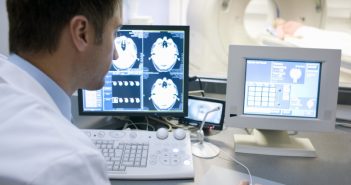 Today it is possible to use freeform text from patient journals in data management to support healthcare professionals in their daily decision making. This blog post elaborates on how hospitals can automate their diagnostic coding to be more efficient, reduce errors, and improve quality and patient safety.
Today it is possible to use freeform text from patient journals in data management to support healthcare professionals in their daily decision making. This blog post elaborates on how hospitals can automate their diagnostic coding to be more efficient, reduce errors, and improve quality and patient safety.
This is the second blog post in a series of three. My first blog post was an introduction to the patient safety and quality framework.
In health care, diagnosis codes are used as a tool to group and identify diseases, disorders, symptoms, poisonings, adverse effects of drugs and more for patient encounters. Diagnostic coding is a way to translate written descriptions of diseases, illnesses and injuries into codes from a particular classification. Diagnostic codes are used internationally, and the International Statistical Classification of Diseases and Related Health Problems (ICD) is one of the most widely used classification systems for diagnostic coding.
In the Nordics, the health care sector must do a lot of code registration, and the demands for registration and documentation are increasing. If not done automatically, this requires a lot of time and effort.
Therefore, I would like to tempt you to improve your diagnostic coding through technology. You need SAS® Patient Safety if you aim for:
- Better data quality to report to other databases.
- Ensuring diagnoses and bi-diagnoses are accurately registered.
- Higher clinical quality through flawless code registration.
- Automated audits.
- Higher patient safety.
- Reliable information from data to users.
- Learning how to register high-quality data.
The patient medical record is key
Many processes and results depend on the electronic medical record. Validation of information and the right coding steal resources from patient care, and errors can ultimately be fatal. Imagine for one moment that the validation was done automatically – in all medical records and not just a sample. And as part of the normal workflow.
Using automated diagnostic coding, you can match content in patient medical records with diagnosis codes in the registry. Some hospitals in Denmark, Norway and Sweden have already begun taking advantage of this method.
Imagine for one moment that you could match content in all patient medical records with diagnosis codes in the registry automatically. Automated #DiagnosticCoding Click To TweetImprove through technology
The solution builds on advanced and robust text analytics that applies to all databases. When using this method, you ensure correct ICD-10 coding, and the report represents a clinically correct registration. You improve data quality and validity, and it is more time efficient than a manual audit.
This part of the solution can be used not only as a follow-up and control tool for international diagnosis codes, but also for decision support when you register the diagnosis codes.
A time saver
This solution is a time saver even when it takes in all journals instead of a section for audit. The biggest advantage will be discovered in collecting and showing the results, because it works automatically. When the solution is properly implemented, clinicians can find suggestions for correct diagnostic coding in the system.
Implementing this system will also mean that resources used before for manual audits can now follow up on results and promote a higher level of data quality.
Read this article for more information about Real-Time Data and IT in the Healthcare sector.
This was an overall review on the advantages of using advanced analytics in diagnostic coding. For more details, please do not hesitate to contact me. Look forward to my next blog post on how to use analytics in audits.
